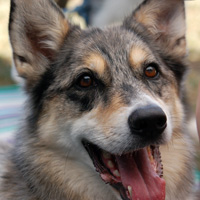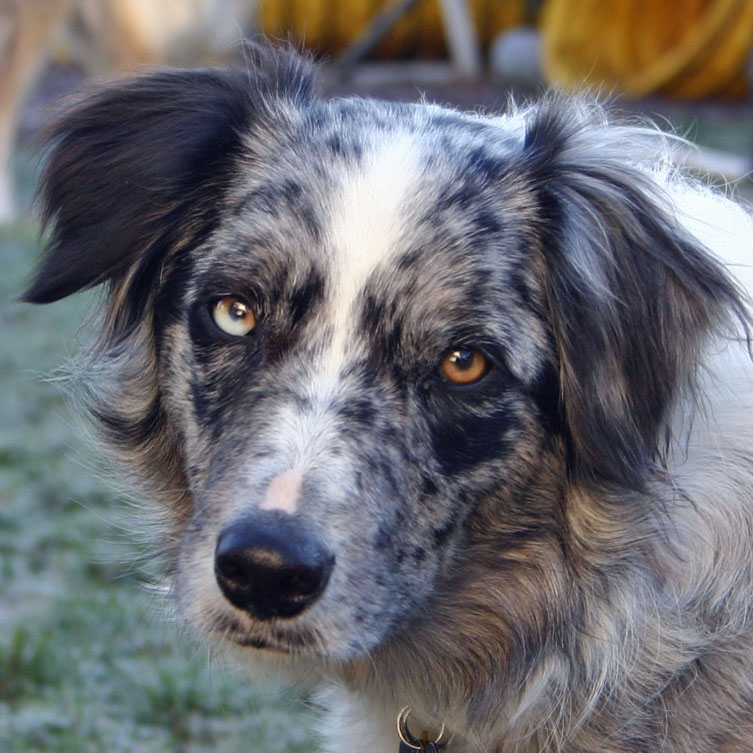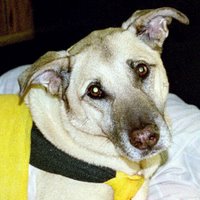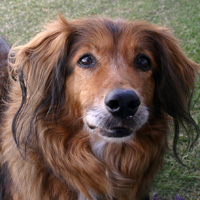An Exercise in Obstacle Discrimination
Whereas in the real world, discrimination is frowned upon, in agility, obstacle discrimination can be critical on a course where obstacles are placed next to each other or sometimes in a gamble or other distance work where the handler can't be right with the dog to force his path.
As I've been learning lessons for Boost, I've tried some of them out on Tika (and, to a lesser extent, Jake). The results are often intriguing.
Take the basic obstacle discrimination lessons that we started in Boost's class this week. The goal of the exercises are first to ensure that the dog really knows the names of obstacles and secondly that the dog can apply that name to a choice. Nancy has us set up with the dog next to us facing an obstacle. We make sure that our body language is correct--that is, our feet, shoulders, head, are all aimed at the correct obstacle. We then send the dog to the obstacle--this is important--using only the obstacle's name. Not be revving them up and shooting them forward, not by pointing with our arm or stepping forward. Just stand there, calmly, and say the name of the obstacle.
I said with grand confidence that I could send Boost to a tunnel from maybe 30 feet away but probably not to a jump. However, I realized as the lesson went on that I always do it with excitement and motion and multiple body signals.
We started out very close to the obstacle--Boost and I started about 5 feet away, I think, but a couple of people had to be only a foot or two away with their dogs. We then moved away gradually, still with a straight approach to the obstacle. We click as the dog successfully does the obstacle and throw a treat or a toy near the obstacle as the dog completes it.
The reward part was interesting, too. Nancy made the point that you don't want to train the dog to always come back to you after doing every obstacle for a reward, which I knew, but likewise you don't want to always throw it staight out away from you beyond the obstacle, particularly with tunnels, because you also don't want to teach the dog to blast out of tunnels away from you without having some idea of where you are and what you're doing.
For speed of the exercise and of the reward and for the dog's speed, she suggested using a chute barrel for the tunnel obstacle (or a scrunched up short tunnel). We also used lower jumps to get going.
So Boost wasn't quite sure what I was talking about to start with, but she picked up the idea pretty quickly. We started with the tunnel ahead of us and a jump to our left. So Boost sat on my right side (away from the jump so it presumably takes the jump out of the picture), I aimed myself at the tunnel, and sent her with our command, "Through!" Our instructions were to do several repetitions at each obstacle before moving to another obstacle and then do several repetitions there, and so on. That takes away some of the doubt and confusion about what obstacle to do for dogs just learning their discrimination.
Over time, we'll gradually move further and further away, and also move laterally to the left and right, and also move the obstacles closer and closer to each other, and of course work the dog on both sides as much as possible. Eventually, as an example, we should be able to stand 10 feet away from and to the right of a tunnel that also has a jump to its right, with the dog on my right, aim my body at the tunnel, give the "Through" command, and the dog will go past me, past the jump, and into the tunnel.
With Boost, I discovered that as another obstacle simply came into view beyond my body as we moved further and further from the intended obstacle (as in my first set-up, as I moved further back from the tunnel, the jump on my left became visible to her even when she sat on my right), Boost was inclined to take the closer obstacle even though she had to cross my path to do it. Very interesting.
So we tried it at home with Tika. Wow. Like she had no clue at all what I wanted. She'd just sit there. Or take an uncertain step toward the obstacle and stop, or turn back to me. I finally gave her some help with a slight step forward and/or an arm gesture, and she hesitantly did the obstacle. But we had to be very close to the obstacle and she remained slow and unsure about it all. So I have a dog who can send to obstacles and who (appears to) have decent obstacle discrimination skills on course, but apparently she's been relying on my body language more than anything and understands her work only at top speed, not when it slows down.
In fact, it was hard to keep her interested and focused, even though I tried goodies, which she'll usually do almost anything for, and even though I made an extra effort to play tons of tug of war fast & happy after each success. She really just likes to run full out!
So this will be even more interesting as time goes by to see what effect it has on our competition. Complete list of labels






0 Comments:
Post a Comment
Links to this post:
Create a Link
<< Home